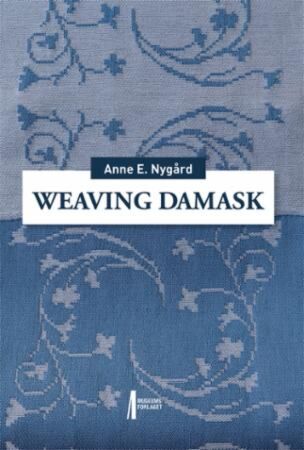Weaving damask
- Format: Pocket
- Antall sider: 126
- Språk: Engelsk
- Forlag/Utgiver: Museumsforlaget AS
- Nivå: Voksen
- EAN: 9788283050929
- Kom i salg: 15. juni 2020
- Utgivelsesår: 2020
- Bidragsyter: Nygård, Anne E. (for)
- Utgave nr.: 1
- Emnekategori: Spinning og veving
390,-
Damask weaving is a special technique originating from Damascus. It is characterised by the pattern produced by the warp and weft, often on a satin weave foundation. On one side of the fabric the weft will constitute the base and the warp will constitute the pattern. The reverse is the case on the other side; the weft constitutes the pattern.
This book, covering the set-up and weaving of damask with a draw loom and a single unit, is the first Norwegian publication in this particular field since 1849. In Sweden, the last textbook was published in 1982. The weaver's craft has moved on, but this has not been reflected in any existing literature.
The book starts with a retrospective view of the history of damask, and of the Norwegian damask tradition from the 19th century. Every step of the process is described in words and pictures: from warp, warping, threading of heddles and reed, to assembly/set-up of the draw loom and how to weave on it. The book demonstrates how to set up a single unit, how to use it, and Opphamta on a single unit is also explained.
The introduction to pattern drawing is an important part of the book. It also contains several complete patterns adjusted to the range of 10.75 shafts. New weaving methods and facilities are presented, and drawings explain how to make draw loom and single unit. The book is richly illustrated with work descriptions, patterns and beautiful damask designs.
This book, covering the set-up and weaving of damask with a draw loom and a single unit, is the first Norwegian publication in this particular field since 1849. In Sweden, the last textbook was published in 1982. The weaver's craft has moved on, but this has not been reflected in any existing literature.
The book starts with a retrospective view of the history of damask, and of the Norwegian damask tradition from the 19th century. Every step of the process is described in words and pictures: from warp, warping, threading of heddles and reed, to assembly/set-up of the draw loom and how to weave on it. The book demonstrates how to set up a single unit, how to use it, and Opphamta on a single unit is also explained.
The introduction to pattern drawing is an important part of the book. It also contains several complete patterns adjusted to the range of 10.75 shafts. New weaving methods and facilities are presented, and drawings explain how to make draw loom and single unit. The book is richly illustrated with work descriptions, patterns and beautiful damask designs.


